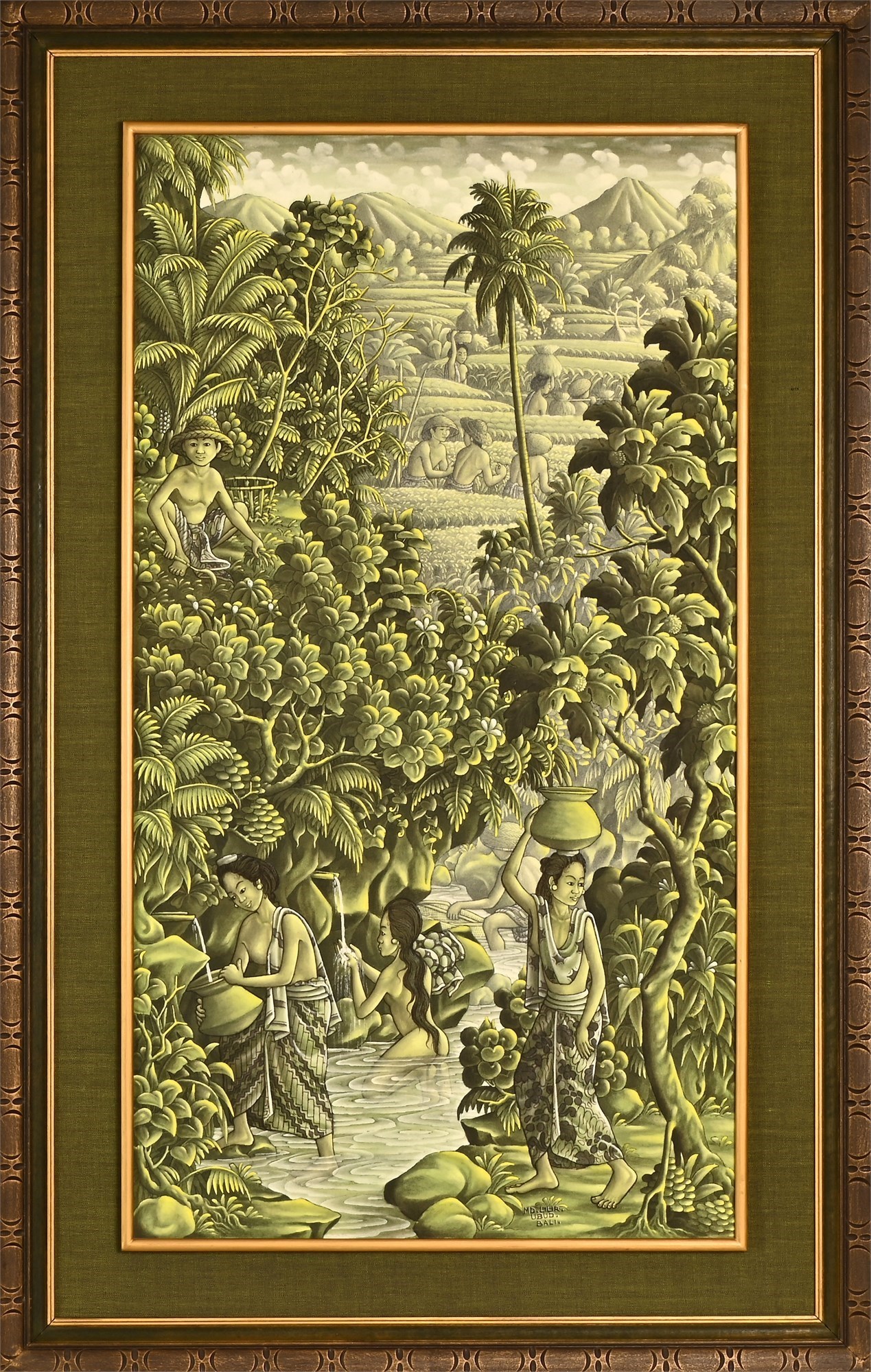Vintage Balinese Textile Painting by M.D. Lilir, Ubud View Watchlist >
- Winning Bid: $61.00
- 25 Bid(s) View Bid History
- High Bidder: Toxinlocin
Seller Accepts Credit Cards
Payment and pickup instructions will be available on your invoice (under "My Account") at the conclusion of this auction.
Lot # J128
System ID # 15555050
Start Date
End Date
1 Watching
Vintage Balinese Textile Painting by M.D. Lilir, Ubud
- Artist Signature: Signed in the lower right by M.D. Lilir
- Origin: Peliatan, Ubud, Bali
Artwork Condition:
The piece is in good condition with no signs of damage.
Dimensions:
Frame Size: 42 inches by 26.5 inches
Visible Artwork: 33.5 inches by 18 inches
This piece is the creation of M.D. Lilir from Peliatan, Ubud, Bali. The color palette is composed of various shades of green with a monochrome-like effect, providing a sense of harmony and life. Similar works by Lilir have been identified from the Peliatan region of Ubud, Indonesia. Despite this, details about the artist's life and broader oeuvre remain scarce.
The painting is a detailed representation of rural life in Ubud. It's lush, green landscape with terraced fields - agricultural setting, possibly rice paddies, stretching into the distance towards a backdrop of mountains. The many figures are engaged in daily life activities: some are tending to the fields, another is carrying a pot on their head, possibly water, and others are near a stream, even bathing. The flora is dense and tropical, contributing to the scene's vibrant yet serene atmosphere.
Another esteemed artist from the region, W. Kurpelir, has produced works in a similar vein, with intricate Balinese paintings on silk fabric from the mid-20th century. These works often feature a Balinese Folk Festival ceremonial procession, utilizing ink and acrylic on canvas, and are noted for their precise and systematic approach to composition, leaving no space unfilled. The Batuan style, a local innovation from the 1930s, is known for its ink-washed imagery on dark backgrounds, detailing Balinese cultural life with fine craftsmanship.
Context of Balinese Art:
In Bali, art is a revered and divine expression. Ubud is considered the cultural heart of Balinese artistry, with its vibrant community of artists and artisans. The tradition of Balinese painting has evolved over centuries, originally influenced by the East Javanese Majapahit Empire and later by the introduction of Hindu culture. Narrative Kamasan paintings, derived from Wayang puppet theatre, depict epic tales and are central to Balinese Hindu culture, reflecting deep philosophical, ethical, and moral contemplations as well as astrological themes.
The 1930s marked a pivotal era in Ubud, giving rise to a new genre of Balinese modern traditional art. This period saw the incorporation of Western techniques and contemporary narratives, catering to the growing tourist market. This evolution of art was supported by Western patrons and the Ubud royal family, culminating in the opening of Ubud’s first museum, Puri Lukisan, in 1954.
